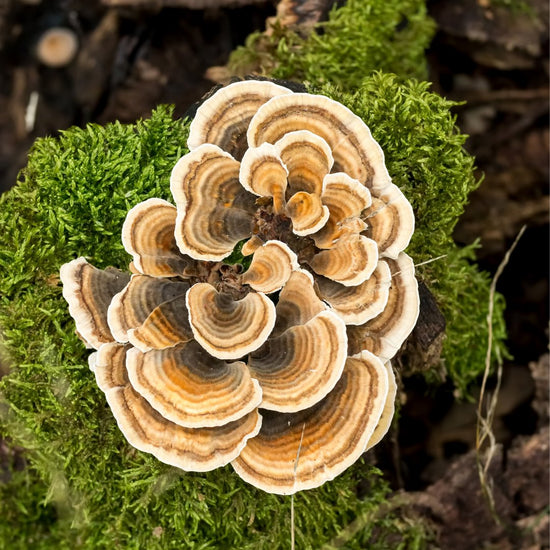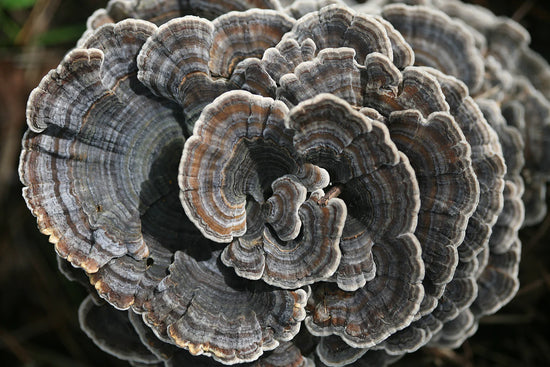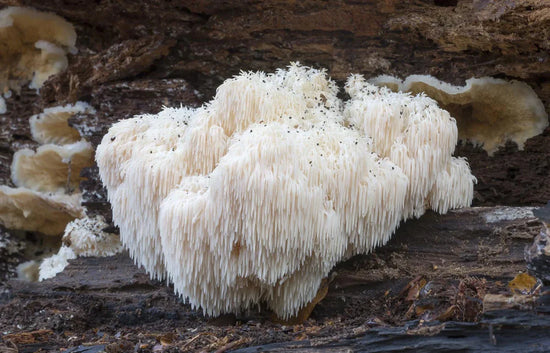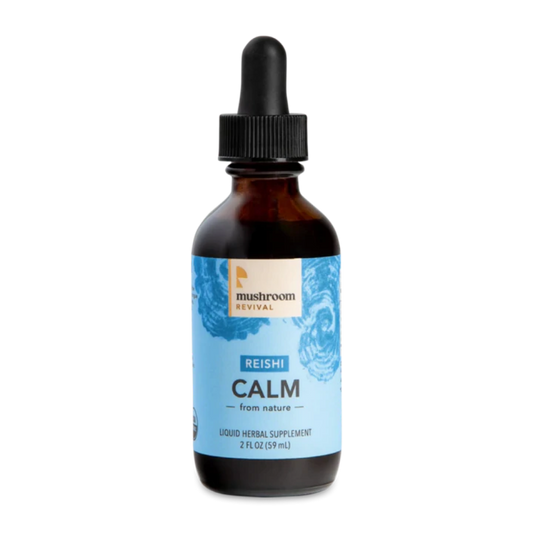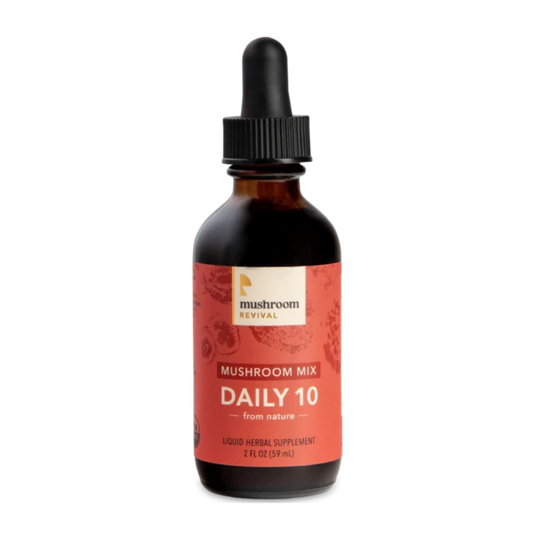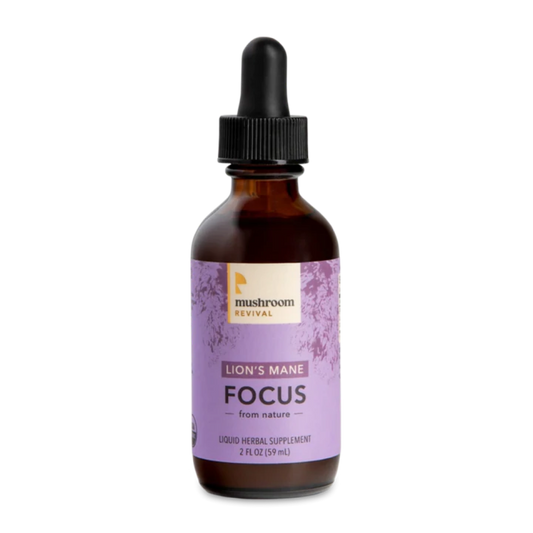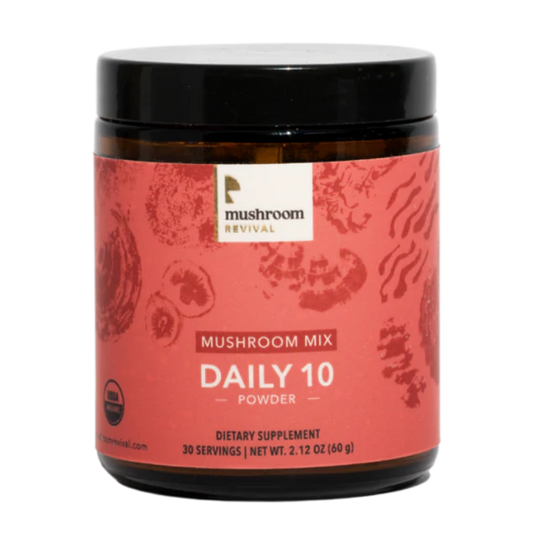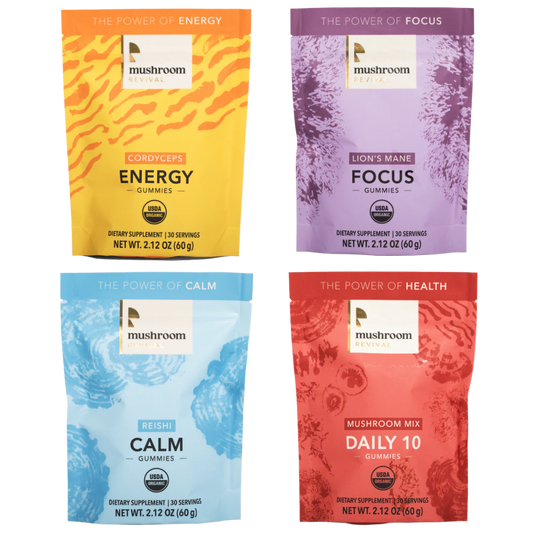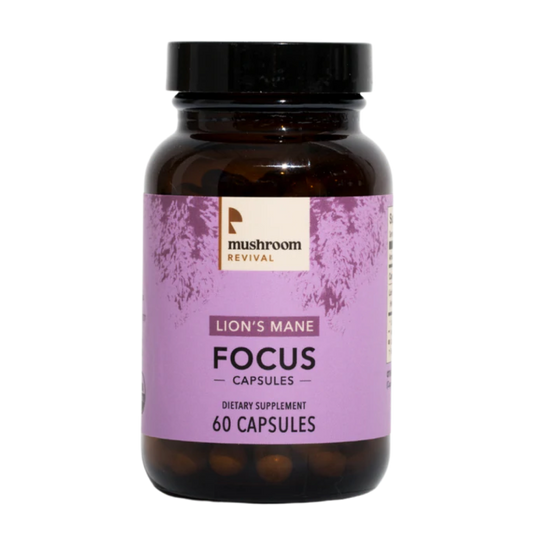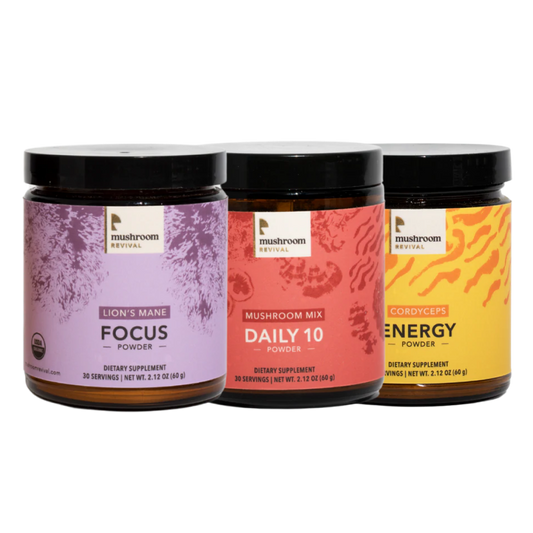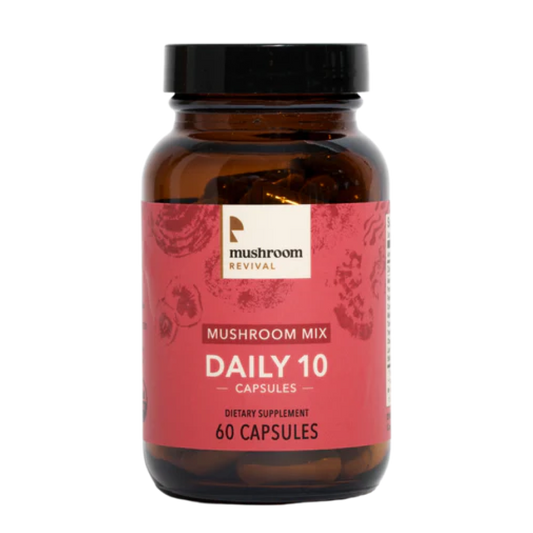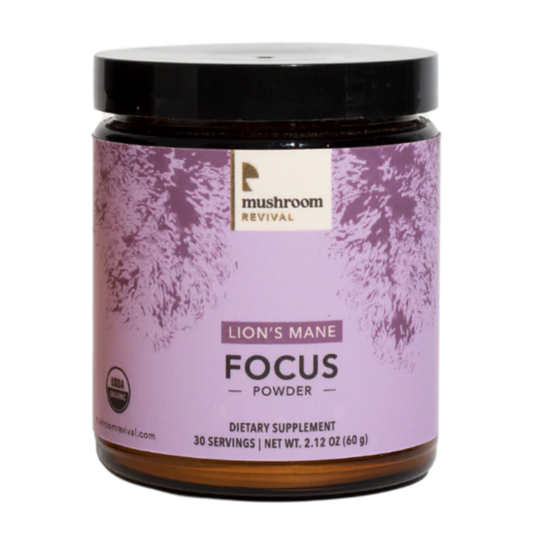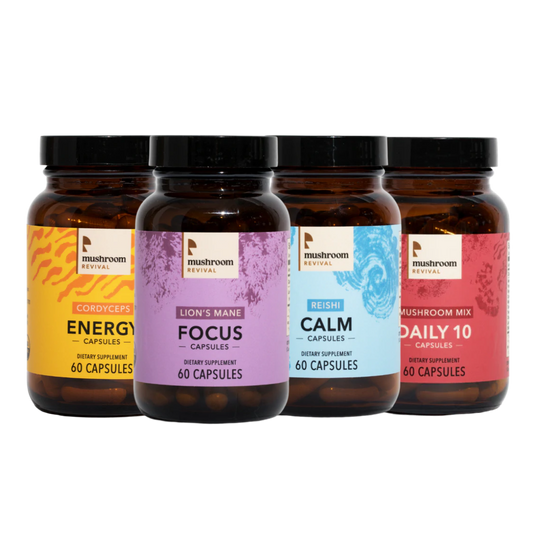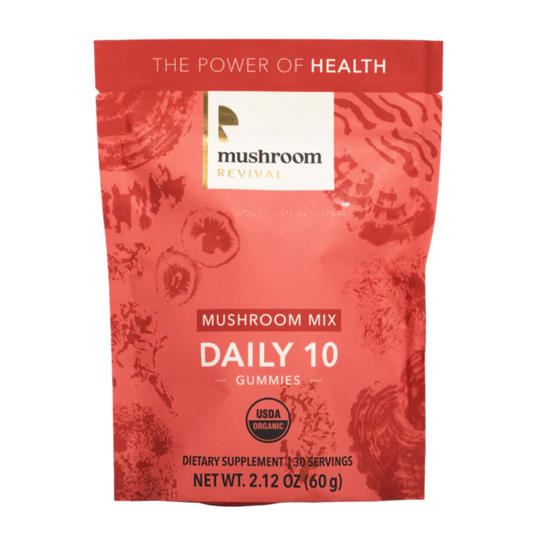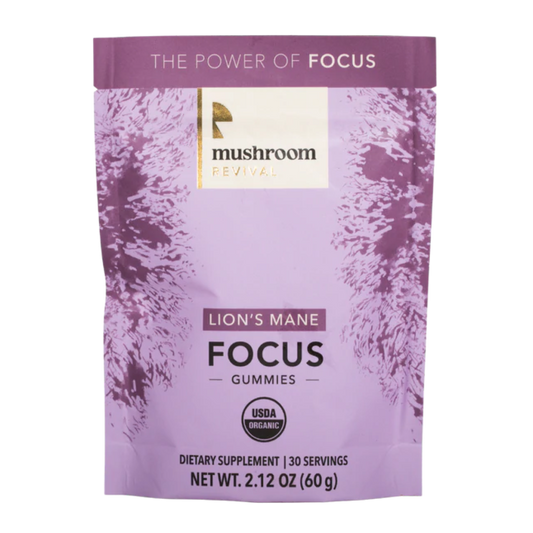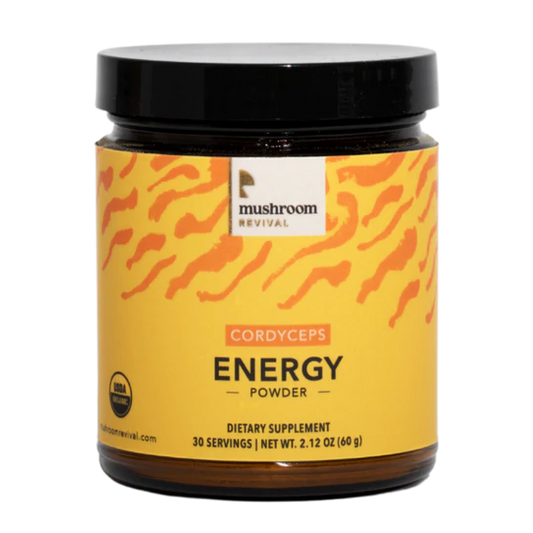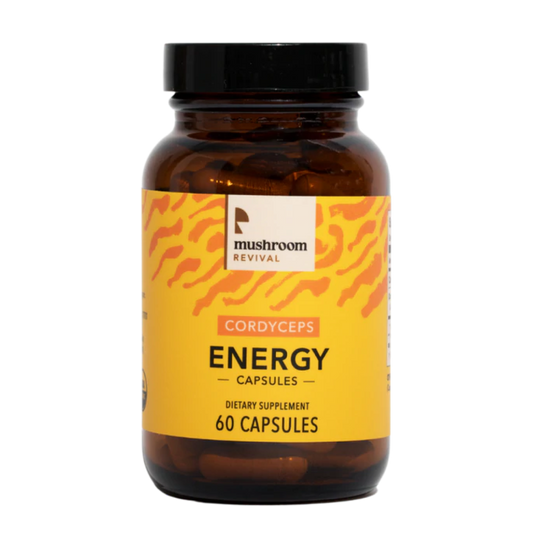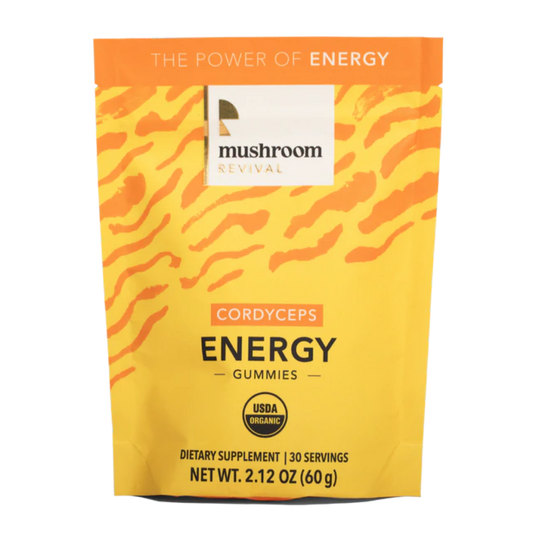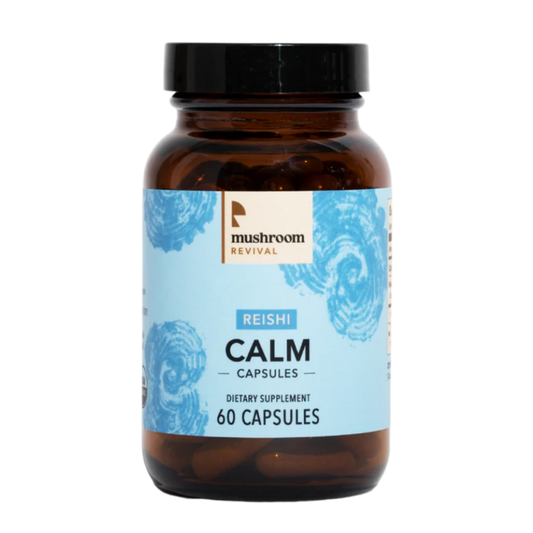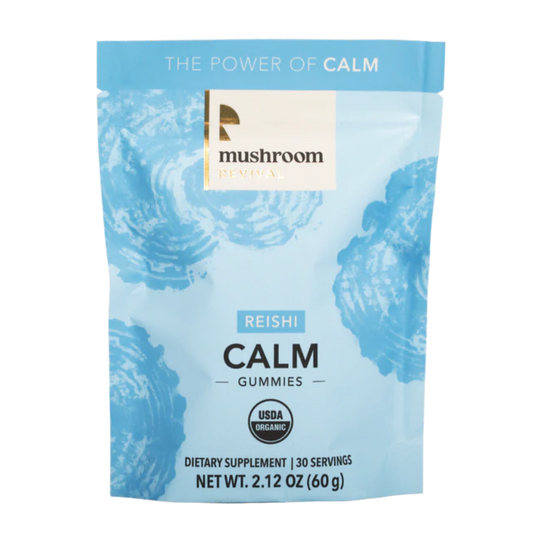How to Cook Mushrooms with Jim Fuller
Show notes: https://drive.google.com/drive/folders/1xKHvl54R74e5sWBQfUgjbraxUgAr0tjN?usp=sharing

Transcript:
Alex 0:18
Welcome back mushroom family. This is a new brand new episode of mushroom revival podcasts. We are a podcast bridging the gap between you beautiful mazing lovely, incredible listeners and the wonderful wacky world of fungi. So you bring in experts from all over the world to geek out with us and go on a journey into the wacky world of mushrooms and fungi.
Lera 1:09
Today we have the pleasure of welcoming Jim Fuller, who is the co founder of fable food company, a vegetarian mushroom based meat leveraging the unique characteristics of various fungi to recreate the taste and texture of meats. Jim is also a chemist, chef and mycologist. He has a degree in chemical engineering from San Antonio. Then after a few years of working in a spawn lab at gourmet mushrooms in the North Bay of San Francisco. He moved to the University of Melbourne to study agricultural science with a focal point and mycology. And his eclectic specialties have brought him far and wide. We are so excited to welcome him on the show to share his stories and his knowledge. Jim, thank you for being here.
Jim Fuller 1:56
Thank you very much for having me. I'm really looking forward to talking about mushrooms.
Lera 2:00
For sure. And we just want to hear your catalyst because you you studied chemical engineering and now you're on the other side of the world, working with mushrooms and approaching them with this psychological science. And how did this happen to you?
Jim Fuller 2:16
Yeah, good question it. It all started, I guess back while I was studying chemical engineering there, sort of started at San Antonio College and went to University of Texas, San Antonio. And I took all of the courses to get a chemical engineering degree. And knew that I was transferring all my credits to eventually move to Australia. Because just before then, I met my you know, my my would be wife online, she lived in Australia. And I lived in Texas at the time, and it all kind of worked out that she was able to come over there and sort of finish her PhD at University of Texas Health Science Center in San Antonio. So while living together, knowing that we wanted to move back to Australia, I was basically just gathering all of my credits, my study units, in chemistry, physical chemistry, all that kind of stuff, physics. And then I ended up taking all of the courses that that are in the degree. And the problem is I didn't want to graduate there. I wanted to graduate at university in in Melbourne. So I actually put a pause on my chemical studies because well, there was no more chemical studies to take. So I ended up started taking biologies, and I never was interested in biology, I was more interested in like mixing things and you know, seeing things in the physical world change it wasn't didn't have a whole lot to do there. But like the the throwaway sentence given to me by a biology professor in biology, one university, we had like two or three days where mycology or funghi were actually focused on and just a throwaway line that sort of resounded with me later was there are not enough mycologist in the world didn't mean anything to me at the time. It's just that that's just something that stood out because we went through all this other stuff where you know, you had the 60 year old Professor talking to you about sex and like the sexual organisms and all these sorts of things. And it was just so uncomfortable to watch. He's squirming with all these young kids. And he's like, Oh, thank God, I got through that. And then we talked about funghi. And we're just like, yeah, they're not enough mycologist in the world, and he just briefly went through it and then on to another thing, so didn't get a lot of exposure to it. But that line stuck with me. I was at the time a full time chef and a fine dining restaurant there in San Antonio. So if you if you guys ever go down there it's on the Riverwalk, it's called biega on the banks. James Beard nominated top five You know, one of the best restaurants in Texas one of the best in the States. Yeah, no, it was really cool before that, like for several years I was working batch cooking and Mexican food. And it like the the stress and rush of the kitchen environment did me Well, I worked really well, a lot of caffeine, just go in there, kill it and then leave and then come back and do it again the next day. So being being that all worked well, for me, I came from Midland, Texas. That's I don't know if you guys know where that is. But it's about five hours west of you. Five or six hours West. And that's where I kind of got all that Mexican Mexican cooking background. Whenever I moved to San Antonio, the regional manager there he was like, yeah, you don't want to keep doing this man. You'll just kill yourself go. And I'll give you a reference. And you go to one of these better restaurants and there are a few around. And it just so happens that I walked into begone the banks with no Culinary Education, but a reference like they'd never heard and just they saw something like, yeah, okay, well, we're starting up this new lunch menu, you can come in and prep for that. And, you know, it wasn't it wasn't very long that it took me at all to sort of move through the entire restaurant, working like as one of their principal dudes just kind of cleaning up after everyone you know, being available everywhere in the kitchen. What that did for me though it was it exposed me to all these different types of food that you never see whenever you're living in Texas. And you just eat like chicken fried steak and catfish and okra and you know, Southern fried food. I was never exposed to ramps or kohlrabi or you know, anything like that in my, in my childhood and into my early teens, it was more macaroni and ramen noodles. But then fine dining chef, I got my hands on all these cool ingredients and the coolest at the time. And I had no idea like their background. And just because I was given three days of topic on them and biology, I didn't really understand them as an organism. But what I did get inherently was they react really cool in a pan, they don't act like me, they don't act like vegetables, they kind of act like both. They don't have the same flavors as either, but they kind of have the same flavors of both. they marry with everything. So you can imagine you can have mushrooms at every meal, because they you know, they work well with eggs, they work well with fish, they were good with chicken, fish, beef, lamb, all that. So it I was just, you know, going from Texas with my background in cooking and loving mushrooms as a as a product that you can cook and not knowing anything about their lifestyle. And having that throwaway line from my biology class that there's not enough mycologists in the world. When we actually picked up to move to Australia. It was actually a stopover in California for a couple of years because my visa didn't go through. And my wife got an opportunity to take her skills from the University of Texas Health Science Center out to the buck Institute in California. So she's a researcher dealing with age related diseases, all that. So buck Institute was designed by Im Pei, it was all this really brand new thing. And it was in Novato, California, where it's sort of the North Bay Area's San Francisco. And I thought cool, you know, we'll go out there. I'll take a couple of years off from the restaurant. I'll take a couple years off from from school so I can still finish my day. My my degree when we go to Australia. So I was looking for science jobs. And, and it took a couple of months. But eventually I came across it. Are you familiar with Craigslist? Yeah, yeah. So like Australia, we don't have Craigslist. So I typically ask that question. But yeah, I know, I know. But I have we have something similar. It's like Gray's auctions are something it's nowhere near as as big and cool. But I used to go on Craigslist a lot. And that's where I found all my opportunities. And one of them was spawn supervisor at gourmet mushrooms. And that's all it really said it didn't have a whole lot that was enticing. But spawn sounded cool. You know, and, you know, it was kind of a supervisory role. So it was you know, not just like an entry level thing. That Hey, you know, I'll go try it. Mushrooms are cool. And, and I went to gourmet mushrooms in Sebastopol, California, where I was introduced to David la Chris, Chris Bailey. And they gave me a tour around the farm I this the bottle farm no less, you know, I wasn't introduced to any other sort of growing other than the very first was introduced.
Lera 9:42
Yeah, that's that's the superior form the bottle.
Jim Fuller 9:45
I you know, I had no idea I didn't I had no idea. I was walking into the Cadillac you know, so I walked around it I smelled the smells. I felt the the surge of vibration like just warm walking through there with all the violence logical activity. And that was the first time and you know, forgive me. But I took three days, three days of my college year funghi in my biology class, but that was the first time I heard my psyllium the word which was shocking, because what I did remember from my biology studies was brain function, brain activity, brain structure, and the myelin sheath between you know, axon and neuron was something that I knew is super important. And if you could sort of build on that, that you'd have like enhanced brain function, and I was almost certain that when Chris Bailey said mycelium that he said violin so I just had the the wires crossed in my head but it so excited me I was like, it's a brain growing in those jars. And you can, you know, like, not only is it food, but it's it's an intelligence, but I didn't realize how right I was, but I was wrong. So I approached it with the idea that I was working with all of this neural network and that I was going to go and sort of start playing with that. And then I just fell down the rabbit hole from there. I picked up initially what you're exposed to like all the standards books, picked up Aurora is all the rain promises, got the then I got the big one mushroom demystified, which is probably to this day, still my most used book, even here in Australia, the mushrooms demystified just it's so well written about how much stuff it covers. And at least if it just covers off stuff in the most generic of ways, and then it kind of builds up quite specifically in the directions. It's just one of the most interesting to show to people and say, Look, you can, you can get really, really complex, or you can sort of be pretty easy on the surface when you're doing these things. But anyway, so that that just spawned my level of taxonomy. It spawned my level of understanding all that stuff. So yeah, of course, I took the job. They love the fact that I had a massive science background, but no real on the ground sort of expertise in growing mushrooms. Yeah, so that that sort of spawned it all. And it's North Bay Area, San Francisco, mushrooms grow everywhere, and you have a lot of people there who are passionate about mushrooms. So not only did I get into working on the Cadillac of farms with the right mindset, you know, to make food and ** out of them. But I was there in in like, the Pacific Northwest, where it rains almost all the time. Lots of things that are well researched, well known, you can walk out and identify everything I got, I got exposure to lots of folks at the time, you know, Glen, Glen came into my copiah gourmet mushrooms not too long after. Not too long after I started there, and went out with Chris Bailey a lot and met up with Tom Volk, and a whole bunch of these other like, names that that just ended up being so important that I didn't realize how important I was, you know, how important are the things that I was exposed to at the time, it was just like that cosmic Aha, I know, I want to do this forever. I know that this is a thing. They stuck me in the farm. And I started working with the spawn and loved it. And what happened then was that I don't have a background in computers, it was all science, pure science. But they stuck me on the sort of data capture of the business, which, at the time, I thought was kind of the most boring thing possible, because I love to see the physical play out, you know, like, like to grow them, you want to go out there and get your hands wet and the substrate and sort of dig into all the bottles and smell and look at the contaminations and wonder what's going on all that kind of stuff. But I got, you know, collecting the data. And they said, you know, you need to collect it from here to here from the beginning to the end. And it was Excel spreadsheets as far as the eye could see. And as the as long as the day was long, you know, like Excel, Excel Excel when I thought, I'm no computer whiz, but I think we can kind of put all these things together in a database. I don't know how to build one but I'd like to have a crack. And I did I had a crack at building what is now still used. It's called the I think Miko track database. Being on the ground with that sort of bottle system day to day every one of those bottles is an experimental unit. So it like trains you in all kinds of areas that you don't realize and data capture and statistics and this and that. But yeah, I developed all these algorithms to give them information on you know, all the batches of stuff that are coming in to the farm that are then getting mixed in certain ratios for all the different varieties of mushrooms they grow, whether they be culinary of the six or seven different strains they have and then of the nutraceutical you know up to 50, who knows how many they have now, but it sort of captured all those captured the origin of them and then applied them to substrate and then through the whole process, concoction He sort of taking them out and spreading them out into the rooms and then harvest data. So I just like within the scope of a couple of years, got all of this information about mushroom growing about materials that they grow on about all the different things that you can do to sort of encourage them to grow all at once. And both culinary and functional. And then not only did I get to do that, but I got to walk around in the Pacific Northwest for those couple of years and sort of learn how to apply names to porcine, and chanterelles. And you know, so, to answer your question, how did I get started is big long story took about 15 minutes. But that's, you know, that that really got me into gourmet and, and I got there for a couple years. And I've stayed in touch with those guys. And yeah, we every time we go overseas to a conference, which you know, right now weeping because those aren't happening. And I've got a real itch to speak mushrooms to people, so you can tell them a bit excited.
Alex 16:03
Welcome, welcome. And how did your chemical engineering background fit into all this? And then how did that transition to you? You know, I'm guessing, you know, because you had a culinary background, you just morphed it all together? But um, yeah, how did those those two or three things weave together the
Jim Fuller 16:27
chemical engineering thing, like I didn't realize how much it would play a part in what I do. But it was really basically just like the building block understanding of what biological systems do physically, the and then how that presents itself, chemically, and then, you know, come down the track 1015 years later, I'm working with those chemical building blocks with the physical, biological building blocks, you know, so it's more like, the the chemistry has been a major sort of benefit to me later on. But it was a major driver of interest early because they had, you know, 47 to 50, different nutraceutical strains. And knowing that food is function and functional foods are really interesting. And mushrooms are probably the most functional of all foods. That function doesn't just come from their biology, that function comes from those little things that they're spurting out, which are compounds. You know, like, when you talk about cotton, you know, you talk about mushrooms have cotton in their cell wall? Well, yeah, but that's not all there's going on there that there's, there's a whole complex of things that are going on, there's proteins and cotton and glucans. And there's, you know, they're all different. So the chemical engineering thing more about an understanding that it's not just, you know, a plus b plus c equals D, in the, in the biological world, there's a, you know, a whole bunch of tangential calculus that's going on there with the, with the chemistry as well. So yeah, didn't that didn't really tie into like driving anything professionally, other than major interest, but now, being you know, in fable we'll talk about in a bit, I guess, I sort of work to sort of re or look at how the chemistry works and how it can help me sort of make stuff happen. But, you know, I realized that mushroom farming was a big sort of intersection between farming and science, art. And it's, it's like, mushroom growing sort of became to me what chemistry was, which was a very central science, chemistry. It belongs at the center of, you know, physics and biology's and all that other sciences. It's a central science. Mushroom, to me became like the central organism in everything must sort of go through here somehow.
Lera 19:02
I'm super excited to dive into the culinary science behind working with mushrooms. But before we get there, could you tell us more about fable and what exactly
Jim Fuller 19:13
yeah, sure. So jump ahead to just beginning of 2019 fable wasn't a thing yet. But I had met with the one of the co founders, so I was working. I started working for him on his organic Agaricus mushroom farm. This was coming off the back end of working five years in the fruit and vege wholesale market here in Melbourne selling mushrooms because I was sort of got it No, I just got out of grower and got out of consulting and and there was a lot of money in the whole sales thing. So I did that for five years, but I wanted to get out of that. And the opportunity presented itself to go work at this Agaricus mushroom farm. It was the largest organic Agaricus mushroom farm here in Australia. I had previously worked for customers mushrooms, which is the largest mushroom farm in the southern hemisphere in their spawn lab, which is a cool story. That was after I failed in business once I moved here. So after backing up all that way, let's bring it back to meeting Chris the co founder. He brought me in because he knew of my background with TMI, because you checked out my LinkedIn and stalk me there. And as soon as I got out of the, as soon as I said, I wanted to get out of the wholesale market, he was like, Yeah, yeah, come work for me, we'll figure out a thing for you. You'll, you'll be growing exotic mushrooms, or you'll be you'll be adding the exotic mushrooms to our range, or we'll be doing something with exotic mushrooms or fermentation or functional or we'll find something you know, he's like this just come across and we'll do something so did and it turned out that the mushroom market the Agaricus mushroom market took a hit that it hadn't seen in four years, right as soon as I started there. So we didn't jump into exotic mushrooms. We didn't jump into fermentation and we kind of got I was kind of struggling you know, the business wasn't making a whole lot of money like it had been didn't have all that extra cash around. So I was sort of remanded to working with what I had available. And what I noticed was, we were throwing away a couple of tons of Agaricus mushroom stems a week and think back to Costa mushroom days. I was thought we were throwing away about 70 tons a week. 75 tons a week of mushroom stems that the major issue there and I don't know how much do you guys know about Agaricus? Do you know a bit or anything?
Lera 21:41
We've had a William Goss who used to work yeah, right mushroom, which is the biggest again,
Jim Fuller 21:46
quite familiar.
Lera 21:47
Yeah, maca.
I know. It's very different. In terms of cultivation.
Jim Fuller 21:53
Yeah, yeah, there's a lot of differences. So at cost the mushrooms I worked in the spawn lab there and we had a we used MSL spawn. So that's actually provided by the Monterey mushrooms. So like all the science behind MSL, all the equipment, they had licensed all that technology, so I got to work with that system for three years here, managed spawn lab. And that's you know why anyone would have me in Agaricus farm anyway. But yeah, so America is slightly different. And the retail market for Agaricus has very tight stipulations on what is acceptable. So you know, the cap can be up to a certain diameter before it's called a different thing. So there's buttons, cups flats, I think they're called something different in the States, but I can't remember now they're buttons opens and I can't remember what they were called. But maybe that's a terminology that sort of works around the world. The thing is that the stem on buttons and cups can be no longer than half the diameter. So in the case where you're growing on a mushroom farm and you need to grow a lot of mushrooms on the bed, they actually need to grow kind of long stem so that the the caps can round out. But they also need to cut those off so that they can pack them up and sell for retail. So a good amount of lost that goes on there which is all clean food, but mycelium at the surface of the peat. So in Agaricus mushrooms, they put peat across the surface and non nutritional layer. And it's a water holding layer. The mycelium sort of knots up in forms primordia, just under the surface. And then as they grow their connection to that Pete sort of isn't just all mushroom on one side and all sort of mycelial network on the other. It's like mycelium, then some peat mixed around in there, the mycelium sort of grows around it sort of roots itself. And then the mushroom forms on top of that. So the first you know, a couple of millimeters, if not the first centimeter. So if connection is inclusions of peat, and whatever else is in the peat. So harvesting over the past hundred years or whatever, has gone to just cutting off the retail requirement and packing that. And then that whole bottom is called a chog. And it goes in a bin. And that goes and gets fed to animals like cows or goats or it goes into a field to become compost. The thing is that those things don't just break down. They require something to sort of break them down and just like you or I were, if we eat a mushroom without sort of cooking it and exposing the inner material like that, that that that cotton complex isn't going to allow us to sort of digest any of it. So that's kind of similar to what goes on with animals, you know, like, I guess the ruminants have a little bit better of a chance, but they're not working with breaking down cotton. They're working with breaking down silos. So they have bacterial fermenters in their guts that do that with cellulose, but not cotton. So I just looked at that and thought, well, that's it's, that's, it's a massive injustice, because there's a whole lot of food there.
And, yeah, whether we can separate out that Pete or not, has been the issue since the beginning. And it's never been worthwhile for a mushroom farm to sort of double cut because it adds labor and labor is the highest cost in mushroom growing, because it requires the most time picking every every, all the mushrooms are hand picked, you know, mechanical picking, you don't get the same brilliant quality, like maybe with robotics in that coming. You will but right now, in all the years leading up to now, you get a picker who can pick this sort of 20 kilos an hour, putting three or four mushrooms in his hand and nicking off all of the jobs and then packing it straight into retail pundit. That's great. That's like the way that you can make money off of growing mushrooms. But if it takes them, you know, four hours to pick that 19 kilos, and they're being very dainty, it's difficult. So that's not an it's not something that any mushroom farm wanted to introduce. So I looked at the well how are we going to extract food out of there, how are we going to get to that happen, so I spent a bit of time working on that, but also spend a bit of time just cutting the peat off and working with the Agaricus waste on its own, and ended up developing a mushroom based meat out of that. And that became very interesting. So about six months in we decided, let's let's take that and run with it let's do a business making mushrooms and and you know, specifically Agaricus mushrooms, but you know, whatever other mushrooms we can work on, into meat. And that, you know, we pulled out, got some got on got on the trail doing some investment, sort of search and got introduced to some pretty big investment people. And one of them was someone who Chris, my co founder, like sort of idolized, and said, like, whatever they want us to do, that's what we're gonna do. And that that company asked us to go meet up with somebody else who they were also looking at, because we had complementary skill sets. So we were working with making a mushroom based sort of mints or a meat patty, burger patty. And the other guy, Michael Fox, who ended up becoming the third co founder was working on a more shredded style or a slow cooked meat style. And we met decided, you know, we could be competitors. So we don't want to share a lot of information with the guy but we'll meet for coffee and and see where it goes. So we met for coffee over lunch left the rest of the day open, just in case. And we ended up spending the entire day together. We ended up trying each other's products later that evening. Everyone sort of fell in love with everyone. It was that it was a Cinderella tale. You know, it worked out quite well. And we said all right, this is what we're doing. Let's Let's do this. Let's develop this thing into something and then fable was born. So officially sort of in the last quarter of last year, they will, you know, got signed in and we all three became co founders. We launched our product in December at a restaurant here in Melbourne. I don't know if you guys are familiar with Heston Blumenthal, he I didn't realize that he wasn't necessarily that massive of a name in the States. But I was a chef in the States and in the chef community he was a massive name in the state so I just sort of applied that to everybody over there thinking everybody knows Heston but how about how about you guys? Have you heard of Heston?
Lera 29:00
I have not
Jim Fuller 29:02
Yeah, so so I guess he's like a big name in definitely a big name in Europe, he has got one of the best restaurants in the entire world. And in the shift community people would you know, know definitely the name of his restaurant and like what he is is he's like, molecular gastronomy if you know that so he was like always a scientific style chef and he was sort of my chef inspiration whatever I was actually you know, back in the in the kitchen a big on the banks, like I would look to Heston books and esten shows and and follow what he was doing to sort of like mimic what I would like to learn, you know, and how I'd like to cook and all that so I actually ended up speaking to Heston getting introduced to him in Thailand through another long story but we launched our product at dinner by Heston. So that's the name of his restaurant dinner by Heston in and you know that's that's a pretty big cool thing. Cool ability to Have Heston sort of preparing your food or Heston chefs preparing your food for all of your launch events and all of the people who are going to be writing articles for you, you know, they're looking at these dishes that are amazing. And he turned our mushroom based meat into snails and into just that one was an ice cream that he created a caramel four out of our mushroom base meat. So that was pretty cool. Yeah, Fable is now available in retail stores here in Australia, it's on I don't know, it was before COVID it was on about 50 different restaurant menus. But because the restaurants being a little bit disrupted, I'm not sure how that's gone. Like my end is in the development side. So I'm not in touch with sort of the day to day who's on and off with sales. But you know, we're we're always going harder and doing more developing the next thing. But yeah, fables slow cooked style. Meat is is our thing. It has that whole? Yeah, it's just, it's taken off. It's doing well.
Lera 31:08
Yeah, this is it's such a funny series of unlikely events end up creating a product like fable. So what exactly is it? It's the stems of Agaricus and how did you treat it? And like what what else is infused in it? I mean, how do you turn the stem of the Agaricus into
Jim Fuller 31:28
Well, there's a bit of IP in there. So I'll talk about the structures and the sort of textures. But it was it wasn't Agaricus that we ended up developing into fable. So Agaricus is in the pipeline for product number two and three. So that's what me and Chris were sort of working on. And then Michael was working on the shredded meat product. And that was with shitai mushrooms. So he was most of the way along the development pipeline there. But sort of when we came in, had the technical skills to sort of pick it up, run with it and develop it and launch it, like immediately almost those that that is more, it's shirataki stocking mushrooms, stocking mushrooms being dried, being very hardy mushroom, they you can pull them apart, and you know they have shreds, they actually shred up like meat. So having the idea to be really minimal as possible processing with as little additive as possible. And anything that we put in there being natural, I you know, like having this whole ethnos is why I wanted to get into mushroom based meat and why Chris wanted to get a mushroom based meat. And it just so happened that Michael wanted to do the same thing. So having that alignment was great. Because it means that we're not turning out mushrooms that have been glued together with, you know, who knows what, and it's not gone through massive, incredibly, um, destructive cooking processes that take away like the essential greatness of what the base product is. So you translate, you know, all the good mushroom stuff into the final product, rather than sort of removing it all and destroying it all and then just working with the benefits of it, you know what I mean? So Schottky being really great at shredding gives us the ability to basically just put in sort of the right elements to recreate the the taste, and texture of meat. Well, stock is already very high in glutamates. So that umami is there sort of inherently so we don't have a lot to do to change the flavor, we just need to sort of coerce it to be more more meaty and and that's basically the cooking process. And then you've got a couple of different things in there added to sort of just sort of popped out more meaty style, and that's really within the seasoning so you've you know, you if you look at the the label the food, it basically tells you everything that's in there, there's it none of it just says natural flavor with a hidden meaning it's there's yeast extract, which is known to be quite meaty. That's pretty interesting. Why? And then, you know, white, black pepper, salt, soy sauce, those sorts of things, just bringing out and amplifying the mommy that's already there. And then because we don't use any animal fats, and we need the saturated fat for the mouth coating sort of succulents. There are a couple of things you know in the plant world that work out and none better for our, for our liking than sort of coconut oil. You know, it's got it's got really great praise on one side, and it's got, you know, on the other side, people are starting to talk negatively about it. But I think anything that's got a lot of exposures sort of has people on both sides. We're using it for the function to recreate a taste experience or, and the meat eating experience for people. You know, when people say, Why do you Why do you want to create meat for vegetarians or vegans, you know, what, they will just eat vegetables, and they're happy with that. And to some degree, that's right, you know, they're very happy just eating vegetables, but the main thing is, like, we want to help people to reduce their consumption of meat and I was a vegan, I became a vegan for a year just to, you know, it had no like, ethical background. And, like doing this for a business purpose, I literally saw that, we need to look at how we can sustain resources in the world then. And whenever you're living and breathing mushrooms, you know, and talking about starting a mushroom farm and how they're, you know, they themselves are regenerative and sustainable, and you're living and breathing that every day. It sort of makes you feel
like a liar if you go home every day and just have you know, half a kilo of meat and spread that out over your family and know that, you know, for that is just spent 5000 liters of water and, you know, five kilos of grain right,
Alex 36:34
I think for me is is the future, especially with mushrooms, and we're seeing a lot more. One thing that I thought was interesting was this. real meat with mushrooms, kind of 5050 blend, and so you're still getting the actual need, but you're and it still tastes the same, but you're kind of supplementing it with mushrooms. So you talked about Agaricus, you talked about she Taki I know you ran a Morel farm for a little bit. And I'm sure there's tons of different mushrooms that you work with. I know this is probably a really hard question like picking your favorite child. But do you have a favorite mushroom to one to cook but but second to eat? And it could be a mushroom dish as well?
Jim Fuller 37:18
Yeah, so I've been asked that question a lot, just, you know, having the people around me expecting an answer, and it is difficult to pick. So I usually just break it up into a couple, both wild and culinary or wild and cultivated. So in the wild varieties, I always tend to lean towards Central and morels. And then for cultivated varieties, typically sort of should talkie and my talkie. Yeah, but that always sort of changes depending on how I feel.
Lera 37:52
Sure. So I've seen videos on how to cook mushrooms. And I feel like this is a whole science that most people cooking at home don't fully understand. What's the ideal way to cook mushrooms. I've heard you shouldn't use oil because they'll suck it all up. And then you'll be getting like tablespoons and tablespoons of of oil with your food, which you probably don't want to do and that you should actually cook them with water. And you should do it really slowly. It might depend on the mushroom. What have you learned about cooking these tightness bodies?
Jim Fuller 38:29
Yeah. So yeah, you heard right, though, you got hot metal, and you've got a mushroom, right? The mushroom itself doesn't necessarily have any water outside of the cell, it's all sort of locked up in there. That's how it sort of grows really quickly. It sort of absorbs and just massively swells with water, you put it into a pan, and if you've got no oil, then what will happen is sort of it'll burn and the structures will sort of just sealed themselves off, you'll eventually end up with a waterlogged burnt mushroom. So you need to sort of provide something in between. If you start with oil or fat, the temperature of the oil or fat is sort of way outside of what the boiling temperature of water is. So it'll sort of encourage those cells to burst but then sort of flash evaporate the water right at that surface, and the oil will jump into the cellular structure and just sort of replace it and waterlog it because it'll kind of lock out the other water from getting evaporated. So in a nutshell, if you start really, really slow and low, you can you can work with fats, and it'll happen but if you work with like high high heat and that's it, you're gonna end up with really plump, juicy but oily water luggie gray sluggy things so that's that's where a lot of people kind of fail. A couple of different ways that you can encourage the water from the mushrooms and half of the dry material that mushrooms are is actually kind of soluble stuff anyway. You can stick them into a pan Just crowd them. So just stick them maybe like a sauce pot with a lid on top, and turn the heat on really, really, really, really low. And then that'll encourage the cells to start breaking open in the mushroom of the, or the water of the mushroom to just come out and then start cooking just like that, the more comes out, the more we'll be encouraged to come out and you don't really need to add any water. But that is a really long process could take half an hour to an hour for say, a couple of hundred grams to sort of fully release their water. And then you want, whenever you get the water out, you actually want to sort of do something with it, you don't want to throw that water away, because it's full of those soluble proteins and carbohydrates. And you want to actually reduce that down to where most of the water water is evaporated away, and the soluble stuff starts concentrating. And that's when you'll start developing rich, deep brown colors. And that Maillard reaction starts kicking in where there's proteins and sugars that are around with heat that can go sort of, you know, over the boiling temperature of water, that starts happening, as soon as you start getting rid of mostly water and then that sort of stuff will cook down on the bottom of your pen. And you can then sort of throw in whatever fats or oils and then like your arrow maps like onions and garlic and and actually cook those to how they normally would cook serum brown them, you're doing the same thing, they're developing the flavors, and then maybe hit it with a little bit more water to wash all that stuff that's cooked to the bottom of the pan that's nice and brown, and my lard umami and just kind of kick it back up onto the mushrooms. And that's a mushroom sort of dish that a lot of people just haven't had the opportunity to experience like that. But you can absolutely achieve it with mainly just the water of the mushrooms themselves. And then just right at the very end, it only takes about a minute or so to sort of just encourage it with you know, a little bit of oil, one tablespoon of oil for that whole hundred or 200 grams of mushrooms that you put in your stock pot. Plenty and you know, oil and salt is just enough to sort of have a very, very flavorful mushroom dish. So I'd say that maybe that is 95% of the mushrooms react very well with that, but not everyone, I wouldn't do a gnocchi like that. And you know, you would do it be selective for which ones you wouldn't follow that process, but it's pretty good and ubiquitous for most.
Alex 42:29
Right, and it's so easy to mess up mushrooms, at least in my opinion. You know, a lot of times I'll see mushrooms on on the menu, and a lot of times they'll just say mushrooms, and I know it's by mushrooms and I honestly I can't stand but mushrooms I've only had a few times in my life where they're actually uncooked well. And, um, and spice well and and I'm like these are really good, you know, but most of the time, they're just slimy and just like really gross. Like, I'm not a fan and they're, they're a lot easier to mess up than other mushrooms that are a little more. You know, I think it tastes a lot better. So so I'd really like that, that technique of cooking. And we'll have to read this and do this over and over again, as I'm, as I'm cooking mushrooms again, because because it's you know, it's unfortunate because most people are like, I don't like mushrooms, you know, and my brother, like he will not eat mushrooms. And he and I know a lot of people especially when we're we're vending, you know, in person, they'll come up to our booth and I used to do farmers markets and everything and they'll be like, I hate mushrooms, they'll go out of their way to tell me that. And and it's like, oh, you haven't had the good ones or they haven't been paired well enough by someone who knows what they're doing. So this is awesome. This is great, especially for everyone in in quarantine right now. You know, cooking more more than they normally do. And and is Is it true that you should cook all mushrooms I know, you know, people eating philosophy, they don't cook those? Or truffles. I know you can shave on top. That's not technically a mushroom. But are there any exceptions to the rule?
Jim Fuller 44:10
Well, there's probably just a couple of logical exceptions. One is the taste and texture in its fresh state like inoki is great. It's very crispy and sweet. And you know, it doesn't have that massive astringency or bitterness whenever it's fresh. So that's the first consideration is you know, what are the tastes like when it's fresh? And the second is like the environment that it came from. So I wouldn't be necessarily picking and eating wild mushrooms fresh just because of you know the environments that they're in. But there are a couple of exceptions. One being what is it to Fisher leina bedika which is very like him. It's citrusy you know like quite crisp as well. Interesting looking. But yeah, it's still Sort of under a protective layer of jelly. So if you scrape that off, then you kind of know that, you know, there's not anything growing up there. And you can do your best to sort of clean it all off. And yeah, it works really well fresh. Yeah,
Alex 45:11
I've actually heard people that's the state get fungus, if anyone is, is not adapted their their Latin names, but I've actually eaten that fresh when I when I found it in the wild. And I've heard of people making sushi and at that I've never tried sushi.
Jim Fuller 45:27
But being in the mushroom sales, in the wholesale market there I often had it coming through, and was often cutting it open and displaying it in different ways to people. So I've had it raw several times and then raw in a sandwich or in a salad, you know, just kind of showing off its ability. But yeah, so she seems like a really cool one.
Lera 45:48
That's so interesting, that it's an exception. And I wonder, what about it is better for our guts are just easier for our
Jim Fuller 45:58
Well, I don't know that we do get any any real benefit out of that other than mastication, where you break apart those cells. And then of course, she'll get we know, whatever the cellular contents that come out as liquid, but for the most part, your stomach acids, you don't really go breaking down the mushrooms. And that's something that I should, you know, say very clearly that whenever you're boiling mushrooms, you know, you can't over boil them, you can boil them for hours or days even and you're not going to overcook them because that cellular structure is very robust. So that sort of makes it really failsafe, especially like I go and do wild mushroom tours. And I cook all these different mushrooms together in one pot. And I'll start talking and I'll just be cutting and throwing in mushrooms, but I'll keep adding water as I go. And then when the mushrooms that I can see are cooked to the degree that I like them sort of like out then they like noodles, you know, they're not going to go past that they get to a point where they give up so much water, they're not going to give up their own cell structure like like zucchini or, or a vegetable that will break apart because it's mainly just cellulose that's falling apart, that's not going to happen. So you can boil and boil and boil. And that's what I suggest you do. And for people who say that they don't like to taste because they haven't been cooked, right? just cook the absolute crap out of them in water. Seriously, boil, boil until you're happy and then reduce all that water out. It'll take a little while, you know, 1015 minutes to reduce all that water but put a good amount of water in there. That'll really get them cooked. And then all that good amount of water becomes a basic stock. So you can throw in, you know, aromatics and flavors into the stock and then very, very flavorful. yeast extract, you know, a lot of people use that as sort of a MIDI thing that that's just it's it's the cellular contents of a fungus, right yeast, they broke it apart, they reduced it down. And then they turned it into a powder so that you can sprinkle it on to, you know, into a bowl with some hot water and they call that like beef gravy, and that's all around the world. It's beefy. It's gravy. Like people don't realize that cheese extract. They think it's beef, you know, just really beefy. Mm hmm. Yeah, I
Lera 48:05
love they. There's so many like neat facsimiles within the mushroom world. You know, you have a shrimp steak. You have the lobster mushroom and I love it. I feel like there's a mushroom for almost every fleshy dish that we're used to
Jim Fuller 48:22
Definitely agree.
Lera 48:23
So I have a question about cooking mushrooms by soaking them in vinegar. I just heard someone say that you could do this and they did that with Morales. I think they drive them around and then soak them in vinegar.
Alex 48:36
I I've seen this with woodier mushrooms in China. And yes, so good. Yeah. Oh my god. That's honestly one of my favorite dishes. Well, I agree. I think I was half my plate on every single meal was just like vinegar, soaps, Whittier mushrooms, and my, if I got cut, it probably wouldn't be a good cause. prevents clotting, waiting for hours, but I would have loved it because they are so
Jim Fuller 48:59
good. 100% and and you notice that half of what is great about that is that they retain that sort of crispiness. So if you were to cook like this, and stick mainly to vinegar, only lightly salting and sugaring because those are they they draw the moisture out and sort of break down the cells a bit more. So yeah, you can cook with just salt or just vinegar. But vinegar itself, in more just sort of encourages the hypertonic balance to change, you know, so it's like movement across the membrane of moisture. So some moisture will come across, and they'll sort of deflate a little bit but still retain that cellular crispiness, but if you throw in a lot of salt or sugar, some of those cellular barrier barriers are start breaking apart and they'll become more sort of cooked as if they were cooked on a pan and you're gonna get into that area where it's not cooked enough and it's still slippery and sluggy. So yeah, that definitely can be done. And pickled mushrooms are on pretty much every culture on the planet has a version of pickled mushrooms.
Lera 50:07
Now, do you ever work with this?
Jim Fuller 50:09
I'm not for fable but I mean for for dishes for like what they call NT posti. We often have like balsamic mushrooms. And then of course, that in China is one of my very favorite dishes to that what are your mushrooms so we you can buy that in packets they that they sort of hermetically seal and preserve them. And you could buy that in packets and just open them up and eat them straight out of the packet side. Bring a few back every time I go to China. Yeah, well, cool.
Alex 50:39
I don't know why they're not I keep telling everyone. I don't know why they're not popular. There's
Jim Fuller 50:45
No maybe it's just because they're black. Maybe it's just because it's the word mushroom. I don't know. I agree with you. They are they're absolutely delicious. And anyone who's tried them loves them.
Alex 50:54
Yeah. And here in Texas. I don't know if you remember when you were back here. They grow so big. I've never seen a bear. They're the size of your head. And they're covering a whole stump. Like a whole tree. It's like, yeah, amazing. There's Yeah,
Lera 51:08
they're everywhere. I've noticed at least in Austin, there's not many mushrooms around here especially Yeah, yeah.
Jim Fuller 51:16
Yeah, find that one. Yet, find that one, put it on a skewer, a little bit of oil, some seasoning and then throw it on a barbecue thrown on the grill. It's it is it's so delicious.
Alex 51:27
I'll definitely have to try that. I don't know, you know, I've only had it and sweet and sour soup and the vinegar. But yeah, I like what you're saying about the slim cooking that that? That that's really amazing. And you're really into cultivation. So I don't know, if you've experimented with kind of the more esoteric trial and error RND of using maybe different spices or herbs. I know. There's a few stories of you know, some traditional Chinese Herbal practitioners growing, let's say Reishi off, you know, different herbs or gin saying or something like that. I don't know if you've tried to grow any mushrooms off any spices or anything like that in the substrate? And, you know, or done any experiments like this to experiment? Yeah, so
Jim Fuller 52:19
there are a few different woods that have sort of very interesting flavors that I've tried. Never really any success there seems to inhibit more than anything, the growth of the mycelium, right. But things that have high sugar content seem to have a good effect on the sweetness. So if you were to use corn cobs in your substrate, like and then overdo it, use a lot of corn cobs and your substrate you'll end up with something at the end. That's really sweet. I haven't I haven't seen that play out with sort of bitterness, but I really haven't measured it so much. But the main thing here in Australia is that I have to find a wood that works and with all the eucalypts there are a lot of them that are just too gummy and resignations to end up with actual mushroom crops. So you kind of just go with what works here. And I hadn't had the ability to experiment with all that stuff that you know that like gourmet mushrooms was able to try you know, throwing extra corn cobs and things like that in there, right?
Alex 53:22
I had a conversation with a quarter seps farmer actually, they had the biggest quarter subs farm in the world and China. And they were saying the same thing that they would it's really funny because they had all these different types of quadriceps militaries that they were selling and one was high in calcium another one was high in Selenium another one you know is almost like a vitamin and and they had other ones that they're describing. Some they used a wheat substrate, others they use the rice and he said, Oh, the rice one is good for tea, because it's really sweet. You know, the rice that has it's more sugary and it brings out the sweet flavor. So it's really nice to enjoy as a tea whereas the other one is it's better in other applications. So I like that that's that's really awesome. Yeah, that's
Lera 54:10
a whole interesting field to get into with how the substrate yeah influenced the flavor profiles and chemical profiles of the fungus Yeah, there were so
Jim Fuller 54:21
those mineral things that you talked about, like the calcium and selenium you can you can kind of add those the last stage so they're just kind of taking the water that you're putting on the surface and sort of inflating the mushrooms you know, during sort of maturity, maturation and harvesting. So if you want to if you want to increase the mineral profile, that's that's the time to sort of really focus on doing that.
Lera 54:42
So and on a similar line. Have you ever played with using the substrate as the food kind of like Tempe? I mean, obviously if you're going on whichever option, but if you grow on rice, I mean, we grew over course on race and we would
Jim Fuller 54:58
Yeah, absolutely. Yeah, absolutely. So, a spawn. I did that every day for a lot of years of my life making spawn. So I definitely saw that that spawn could definitely be food. So definitely have played with lots of different things additives to substrates that then become edible. I didn't ever come across anything that I thought was amazing. But I thought a lot of things were interesting. It tastes like mycelium on whatever it is that you're cooked. But I've gone so far as to, you know, look at because I want to recreate the taste and texture of meat. So taking substrates that are, you know, sort of inherently fibrous and meaty. I've, I've even used, worked on fermentation of straw like wheat straw, and then got that down to the point where it could actually be masticated and then grew mushrooms on that to sort of knit it all together. It wasn't amazing. But again, it was something that was interesting. And maybe there's a you know, an application down the track that something like that will work out for but yeah, absolutely. It grows around edible things and then becomes something else you can eat.
Alex 56:10
And this is a question. This is a really, really common question for people consuming mushrooms. I've heard a lot of people say I'm allergic to mushrooms, period. Is that possible? And can you can you one be allergic to all mushrooms, or single mushrooms or a group like all beliefs, for example? And the second part of the question is I heard that depending on what the substrate the mushroom is growing on, like, particularly I heard this with chicken of the woods. And again, remember what certain tree grows on maybe apple or something that people have allergic reactions in, but it's only 50% of the population or something. And if you could serve the same dish, and only 50% will be puking their guts out and 50% was like, that was the most amazing mushroom dish ever. Yeah. So what's what's the truth behind all this?
Jim Fuller 57:04
Well, I wish I could reveal it all. But I've been I've been through this for years. And I have experienced in my career, only a couple of people who actually had true allergies. And the true allergies were related to one particular mushroom. So I have of course heard that people are allergic to whole families of mushrooms or people who are allergic to mushrooms in general, about never, ever seen that actually true or play out, or I've never seen any works around it. But I have experienced people who have sensitivities to mushrooms, and they feel really ill. And I think the main thing is like the, the actual glucans structure on the outside of the cell can be recognized by some people as pathogenic. And, you know, they'll mount an immune response that that others just mount the general immune response and don't really react that heavily. But that but these people will have like knots in their guts and they'll have sweats and they won't feel very well. You know, it's not like a mushroom allergy is something that's like going to actually be fatal. But I really do think it relates down to the glucan structure of a fungal cell that kind of relates to what may be pathogenic like a bacteria or a parasitic type of funghi you know your body just some people's bodies may just have those responses so yeah, I don't know if it's actually true or not but I do know that there are actually people out there who are really really are allergic to one type of mushroom and one of them is should talk in whatever was actually Morel
Lera 58:39
isn't that a potentially poisonous Yeah, yeah, and there's there's a few mushrooms Yeah,
Jim Fuller 58:44
so I can't remember if it's like hydrazine or jet fuel or something like that the the chemical related to in Morel but it has a very low sort of evaporation point. So as soon as it hits the pan you can kind of you know above a certain temperature you can be certain that it's not there. But yeah, it will it will make you vomit very violently if you consume them bro. Oh, and the second part of the question was can you can you cook them to make them safe and yeah, Morel is one of them. Chicken of the woods is right. And if it's growing on Eucalyptus, that'll that'll make most people sick. So the the resins and Eucalyptus and that's kind of one of the reasons we can't use all Eucalyptus to grow mushrooms on is they're they're sort of an antifungal sort of thing. So who knows what's going on. But yeah, that once once that crosses into the mushroom, it's very difficult to cook it out but you can it takes like 10 or 15 minutes boiling really hard. Then you throw away the water and then you can cook with the chicken so we've done that before and it works out. It works out quite nice. Nice so you still get the eat the chicken of the woods after it's been on those trees but chuck it in boiling water and you'll end up with nice chicken of the woods and if you chuck it in red wine, you get seven of the woods
Alex 1:00:01
Just like fiddlehead Yeah, no, you have to Blanchett beforehand and and it's really interesting I I'm a little nervous when you have these really cool restaurants and they serve like wild mushrooms and you know these forgers bring in, you know, all these wild mushrooms and I always hear there's there's a lot of the chef's just like to cook them and eat them, but they're not ID experts and maybe the person that brought it in just wants a quick buck and, and will mistake the ID. So Has that ever happened to you? Or someone maybe brought in a mushroom? And you're like, Nope, that's not there. Yeah.
Jim Fuller 1:00:38
Yeah. So most of the pickers, they know they're, they know their stuff. They've been doing it for a really long time. And I got I got, like, firsthand view of this in the wholesale market. We had people coming to us to want to sell their hauls, and get rid of their entire haul. I had some pickers come to me and say, Look, I find this one all the time. And I don't know what it is, can I sell it, but they kind of vet it, they vetted it through me, if I wasn't there, they probably would have just vetted it through somebody who thought they knew something and probably made it through. That was the most sort of awkward one that I saw. And the other one was quarter sips. Gunny. I hear in Australia, there's quarter sips. There are several different types of endemic quarter sips. I bought off a picker very routinely. And one day he sold me all of his pine mushrooms is a saffron milk caps in his slippery Jack's, and in the backseat of his car. He had about a kilo picked of quarter sips ganja and they were anywhere between, say, six inches and 12 inches long. And I was like, What are you doing with those because there's no history of safe use of those things here in Australia. So I had known that they were here. I knew where to go pick them all those things. And I knew everything about quarter steps that you could know. But then I saw a guy with them in the back of his car, like, what are you doing? How do you know? Are these edible? Do you know anything about them? He's like, Well, look, I don't know if they're edible. But I've been selling them to a chef for the past 25 years, who puts them on his menu. He's requested them specifically. And it's always this type. He puts him on his menu. He absolutely loves them. So I at least know you can eat them. I don't know how safe they are. And I was like, man, I want to give him to me. I'll take them all have these mushrooms from now on bring me whatever you find. Turns out, they are prolific in certain areas. So the guy ended up bringing me a ton of these things where we didn't really know what the market was and how to play into it. But from that point, I was enamored and like, Okay, are we going to be able to use this is it actually a good quarter steps. So we went down the whole science path, having them compared to militaris, and compared to sinensis and all these things. Turns out, they're super functional couple of the indicated markers that were way off the charts better than the sinensis and a couple that were just underneath. But all of them are there, the target therapeutic compounds are all there. So like, we've got this wonderful, amazing thing. And we know it's all good, we know that it's got all these compounds that are great. We just don't know if it's got anything in there that is new or novel that could cause like long term issues. So there was no like real push to get them out sort of mass market, but there was all there was always a push to get them studied. And you know, me knowing that these people have been using them for 25 years. That was enough for me, and my knowledge of cordyceps up to this point. To say you know what, I'm gonna start taking them. And from that point, until today, I have been taking these cordyceps and they give me life in the night wholesale market. That was the only thing that kept me alive. Energy, stamina, libido. It's all true. Definitely functional. Just amazing. And the ones here they're so big. You get so much out of them. Yes. Huge.
Lera 1:03:48
Oh my gosh, I'm looking at the photos that you sent us. They're like the size of
Alex 1:03:52
Yes. When we go to Australia we got echo cordyceps absolutely nothing. I'm it's one it's on my bucket list. Because they're fun. They are acid. I hear you I know. And it's nuts. You can actually artificially cultivate
Jim Fuller 1:04:08
These are they're pretty freakin special. So I know we are running long on time. But I did give these to Heston Blumenthal when we were in Thailand. And I gave him this little story about how we've tested them and how we know and I eat them all the time. But there is a response in the community to quarter sips mushrooms when you have too much and as far as I know, this is all quarter steps and it comes down to and the reason that people don't ever have too much is because they're just freakin expensive. And quarter sips militaris. They have such a small amount of the target therapeutic compounds that it's really hard to get this large amount of these things that actually what it does is it offsets the timing from your neurons to your body and it's almost universally presents itself as vertigo. That is like you're walking around and the world is Like off its axis. So this happened to Heston. It happens to random people from random amounts of these things. And my boss whenever I was in the wholesale market, he's 65 year old man. He like me started taking quarter sips every day. And it was great. But then he got a bit gluttonous once and ended up taking three of those sticks. We call them sticks, because they're long, right? He ended up taking three of them because he was just so tired. But not only did he do that he had two lattes and one bit of gum that had 25 micrograms of caffeine in it, and that did it for him. He just went vertigo. He started vomiting, he got crazy. And he went to the doctor, I took him to hospitals, I kind of know what's wrong with the guy. And and they said, Look, we don't know, either his vital signs are great. It looks like an athlete. You know, obviously, there's something going on neurologically. And it worked out that yeah, it is this it's like this misfire of neuron to body and it can last a while. For him it ended up lasting like six hours and for Heston, it ended up lasting like six hours with tremors over the next couple of days. But that's just because Heston was a garbage guts. As soon as I told him this story, and he got excited, just like you. I said, Look, just go easy. Have this tea that I've given you. And he's like, No, no, that's cool. I'll eat the whole thing. And he ate his stick it right off the bat just ate a whole stick of like, I yeah, I'm like, Look, you know, I had that much. I, I I've had lots I at one point me and my really good friend like mashed up 12 sticks in one pot of tea, and we both drank it and just had a lovely day. So it affects people differently. And I don't know if it's an accumulation and I don't know exactly how, but some days, some very small amount can actually do that to people who have used it for a long time. So I don't know. But I told him I was like, Look, if you start feeling vertigo, you're going to be in that in that world for a little while. I don't want you to get there. So stop eating these things. And he's like, I'll be fine. And I'm probably you will be you're a garbage guts. You're a chef. You're just like me, you're gonna be alright. And then that gave him enough courage to eat another stick.
Alex 1:07:11
I'm sure that two coffees in the caffeine gum. Yeah, no
Jim Fuller 1:07:14
that no that put that put the bus guy over the edge for sure. And and sure enough when me and Heston were walking around in a mushroom farm in Thailand, the heat was just insane. And while we were walking into a growing room for Rishi and we were looking at saying, Ah, that's amazing. And Heston was walking backwards. Like I think I've got very go. Like, yeah, mate. Yeah. Ready to go. Let's go sit down. And yeah, that I almost thought I killed Heston Blumenthal, that was a terrible meeting.
Alex 1:07:42
Did you see the new study that came out with cortices motorists being really, really helpful for jetlag, and it actually makes a lot of sense. It the core to seep in molecule fastens to an enzyme called Are you the Neo two which alters the transcription of your clock gene?
Jim Fuller 1:08:01
That's a really interesting...
Alex 1:08:03
yeah, so next time you go to Thailand or or come visit us in Texas or we'll go to Australia we'll take cortices motorists and just without Yeah, beautiful dresses in a cafe. And worry about
Jim Fuller 1:08:16
Yeah, just don't overdo it. Everything in moderation made and and these this thing is amazing. These quarter second molecules and all the stuff that's going on, like at that level where it's transcribing differently. That's pretty interesting.
Lera 1:08:30
So this may take the cake for this next question, which is what is some of the weirdest mushrooms you've every? Yeah. Well,
Jim Fuller 1:08:39
you have you've heard of the phallus mushroom fellas and Luciana ballasts. The skirt is a weird lady veil. Yeah, yeah. So that's pretty that was pretty out there. And I got to eat it fresh in the egg. Yeah. So the collagen, the collage Enos, you know, stuff in the egg app, just whole thing. And, and what was amazing about that the stuff in Thailand, super hot, super hot, right? So if you rub that stuff on your skin, it's got a high amount of hyaluronic acid and a version of collagen that actually is quite protective. And it's like the only vegan version of collagen. So you know, business adventure there.
Lera 1:09:24
Wow, wait, really,
Jim Fuller 1:09:26
there's a type of collagen in there and a high amount of hyaluronic acid there. There's something like 16 different collagens out there. I'm not sure which one is in this one. But yes, it you rub it around on your skin, it'll sort of absorb into that outer layer and it's cooling and it's protective against sort of the harsh rays of the sun. I'm not saying that it'll protect you from the UV book. It'll protect you from the UV damage it sort of helps to repair with that and it just like super hydrating so if you know like the silver cloudier mushrooms, super hydrating got a high hyaluronic acid content, same deal. Hear so yeah, it's really good for you to eat. They make beverages and foods out of it there. So I was I was quite happy to have more of the preparations than just the fresh thing, but you got to have the fresh thing at least once.
Alex 1:10:13
I still had not eaten it. Yeah, it kind of freaks me out. So that's like, yeah, eating a genuine is pretty popular in Asia. That's freaks me out. I'm not into it, but I'll rub it on my skin. I'm all for that. I'm just I have a whole video of watching lira eat this for the first time and maybe maybe, you know, if I'm if I'm really in the mood, I have a couple of drinks. presented and I'd gone and kick it off.
Jim Fuller 1:10:45
on my Instagram highlights I've got I've got a video of Heston rubbing it all over his face in Thailand. So if you've got a chance, go have a look there.
Lera 1:10:54
What's your instinct? Oh,
Jim Fuller 1:10:56
good question. I think it's long tail. Tex ADA, I think. Yeah, that's what it is. Long Tail, Tex ADA.
Lera 1:11:03
We'll have it in the show notes for everyone if
Jim Fuller 1:11:05
Yes, wait that out.
Lera 1:11:06
So what about some creative dishes that you've made with mushrooms? Like Have you ever done really strange processing for them like juice, man?
Jim Fuller 1:11:16
Yes. So the juice thing, a volcano
Alex 1:11:20
with some some smoke of spores coming out of it.
Jim Fuller 1:11:25
Never that theatrical other than like cooking in front of people where we've just gone out into the woods, and we've harvested everything out there that's edible, and some of the things that are questionable and we go through all of the you know, taxonomy and then we'll actually cut up and put the mushrooms in a dish. So those are the actually the the mushroom dishes that I've created that have the most sort of range and variety. We counted it up and I put in 14 different mushrooms into a mushroom soup that were all wild varieties minus the Agaricus that we had, you know, good cultivated Agaricus, but the most flavorful marriage of of just experience it's it's so interesting everything that comes out of that walk whenever we're walking around in the woods, I take an outdoor burner like a fryer, you know the the big pots that people use for Turkey frying. So I got that stand that I take walks out into the woods and then we throw mushrooms in there bottled water, garlic and salt and people will have it and then we'll do like progressions of dishes from here's what the mushroom tastes with just a little bit of olive oil, or boil it with water, then put a little olive oil at the end. That's what a mushroom tastes like all on its own. And people eat these mushrooms like straight off the ground into a pan, taste it and say that's the media's most delicious morsel of food I've ever had. And then we'll do that with a compilation of them. And then we'll take it and make a creamy side dish and then we'll make a soup all those sorts of things. So that's about as wild and crazy as I've gotten. And then of course, like stuffing morels with, you know, truffle infused the abalone, you know? Yeah, it was all about expensive, expensive. Yeah, we'll just put in everything gold flakes and fall gras. Yeah, so I mean, it'd be got a chance to do a lot of that crazy sort of really experienced really expensive experience stuff. Yeah.
Alex 1:13:15
Have you ever worked with psilocybin in anything? I know. You know. I've seen a lot of people make gummies and lemon tech tea. And I mean, probably the most famous is is peanut butter crackers. I hear that a lot people take you know, they don't want to eat it. It tastes this so sigh babies that peanut butter crackers astringent. Have you ever worked
Jim Fuller 1:13:41
to make them into a food? So I'll say I'll preface this by saying all of the work that I have ever done with these things has been in a legal environment. So you know, wherever that was, it was at the time. Right? Yeah. So they were made in two forms that with high fat content, so they have quite fat soluble so butters and then you can turn the butters into solid butter forms like chocolates. And then of course, probably just the easiest way to do any of those preparations is just into capsules with other really great synergistic brain things like hericium. And you know, if flyness is actually quite good, it has it has three different types of chemicals, compounds that will cross your blood brain barrier. So that's another one that's super great for your brain.
Alex 1:14:41
Like Yes, sorry.
Jim Fuller 1:14:42
I said flyness. I'm it fellas. So that Yeah, like I said, I said for Linus. I meant fellas. Pie. It was in my head. The induced yada. Oh, yeah. So the actual the the veiled lady, the the same one we were talking about was the weirdest experience. Jackson actually has three different compounds in there that are that are quite strong.
Alex 1:15:06
Yeah, I would never have guessed a pair that was Yeah, well, you
Jim Fuller 1:15:10
know, it fires off all of all of these interesting neural pathways. And whenever you have things that are known to sort of cross your blood brain barrier stack up along your myelin sheath, work to neurodegeneration, it just so synergistic. whenever you've got all these new neural pathways firing, you got all this stuff in there to support it. I feel invigorated. You know, when I was able to have those things on a daily basis that felt very, very invigorated, energized, paired up with quarter steps. So good. Brain firing on all cylinders, just Yeah, yeah. But never, never as like a flavor. Never as a flavor. It was always about covering up the flavor.
Lera 1:15:57
Yeah, it's very rattle. There's a bit of a doctrine of signature with the veil lady. I don't know if you've heard of this before, but it's basically just a term used to describe when the morphology of the food you eat benefits the organ system and yeah, yes. Was that? Yeah, I can totally with with the veil itself. It's Yeah, a network. You can make the argument. Totally.
Alex 1:16:22
That's the one. Wow. And it is interesting. I don't know if shamans or quitting dental school and dentists in Mexico still use this synergy. But it back in the day, they used Salafi with quadriceps capitata and total climb over the centuries. So they they they the lack of mighty truffle, or false truffle. Of these two species, they they blended them together. So it's really interesting, more synergies of mushrooms with Salafi. And yeah, I'm interested in all the different synergies from from all different cultures around the world. It'd be interesting to see all that. Oh, yeah. Yeah, yeah,
Jim Fuller 1:17:08
there's so much knowledge out there. Aboriginal culture in Australia has so much knowledge, but they don't write it down. They only pass it along. So you have to be like, fortunate enough to know someone who can actually get you into ceremony that you can be, you know, taught. All those sorts of things. Yeah.
Alex 1:17:28
Right. And when you were in a legal setting, it was so silent. Have you ever cooked under the influence of So Simon did that change your cooking techniques? Yeah, new view or connection to Yeah,
Jim Fuller 1:17:42
and it unfortunately, took me right out of the cooking, because that seems so mundane, and not exciting enough, you know, so, I know, I know. But I have that culinary chef brain that loves to do this. So I just wanted to be more interactive with my, with my surroundings, and the people who are around me rather than cooking for them. So I mean, it sure I still made the the food with care. But I did it in such a way that I did it straight through no really talking No, no sort of loving environment, going into the food, serving it and then enjoying myself, you know, after having it and serving but the cooking took me right out of it took me just away.
Alex 1:18:30
Well, I think there's lessons in there, you know, why do we cook in the first place and wanted one of them one of the main reasons is to really come together with your friends and family and, and, and kind of crowd around this, this central piece of sustenance and need and and, you know, euphoria in your taste buds. So I think maybe that was a lesson I don't want to speak. No, you're right. That's my
Jim Fuller 1:18:57
takeaway to you. That's
Alex 1:18:58
like the emphasis on the people, you know, emphasis on, like, you're doing this to connect with people and connect with people
Jim Fuller 1:19:05
hundred percent. Yeah, no, that's exactly my takeaway. It was that these people are important to you make the food with love, but get to them, you know, this, you need to interact with them rather than with these inanimate objects that are in the pan.
Alex 1:19:20
So we've been focusing a lot on kind of the fleshy bodies of fruiting body fungus, you know, and there are many different ways to interact and kind of create beverages and foods with fungi. Apart from actual mushrooms, what have you worked with? You know, kombucha, for example, is a great example of a scoby and yeast and you can do so much with yeast. And I'm sure a lot of people work with yeast every day. And Easton had no idea that's fungi. So do you have any favorite ways to work with fungi outside as well? Yeah. So,
Jim Fuller 1:19:58
so many But I think I'd focus on the the, the enzyme stuff that they have really makes them interesting to work with wood and waste wood so you can break down waste wood and then do something with that. So taking the taking the use substrate from a mushroom farm, and then you know some degree put it back into the mushroom farm, but to the, to another degree, you can take that and utilize it not just for cropping there is there like middle steps where you could actually do some more interesting things with it. Actually, one of the one of the one of the applications that I loved was utilizing it as a biofilter for aquaponic scenarios. So you actually collecting all the solids from that sort of thing. And then letting that compost it, it just kicks off the bacteria and the other fungi that that that sort of get that stuff to a state where you can put it back in the ground, and it's all nutrient it's all available for the plants. So that's one thing and then of course kombucha making bread making alcohol, all those sorts of things, and I do a lot of those just you know, interesting and weird ways, utilizing mushrooms to make structures. So you know, actually using the mycelium as grill as glue, and then making the mycelium leather. really something that I was about to step away and start doing before I got into fable. But yeah, making the mycelium into a leather product is really, really mesmerizing for one you can develop such interesting structures that look so animal like in their in their skin patterning and all that. So yeah, I mean that that is a large bunny hole in its own just all the different applications.
Alex 1:21:41
Yeah. Have you ever been to telluride mushroom fest?
Jim Fuller 1:21:44
I haven't. No, it's I learned about that whenever I was in California on the way to Australia, so I only lived there a couple of years, didn't get out. And then ever since you know, for another 13 years been over here and never got the opportunity to go back. But I meet so many people in the science world who actually like to go to that. And then you know, I'll meet them in China or I'll meet them in Europe whenever we go to mushroom conferences. So those are my like, those are my times to be telluride.
Alex 1:22:13
Yeah, if you ever get a chance, you know to if you're ever in the states again, around the same time around Colorado is unbelievable. And I bring it up because there's a an amazing US based mycologist read Potter and he made a mushroom beer. Yeah, for the festival. And he makes all these different varieties. Yes, great. He has some on tap. And it's just a great time to, to, you know, have a few beers with some mycologist. And he has you know what one of my favorite is Lion's Mane Noel Yeah, he says, you know, kill some brain cells and regrow them. And yeah, actually learned that you can replace hops with Turkey temporarily. Reishi in the beer maker. Yeah, yeah. No,
Jim Fuller 1:22:56
we're we're actually making a quarter sips beer for the for one of the festivals coming over here. So knowing that that's a thing we do. Yeah. Oh
Lera 1:23:08
We know so many people in Australia, and is the fungal diversity there, too, is so impressive.
Jim Fuller 1:23:15
Yeah, no, we've got that 500 million years separation from gondwanaland. So we've got like 300 known types of truffle type truffle like mushrooms, which is a whole thing itself, like they're called truffle, like, these are adaptive structures. They're not primitive structures, they, because of the really harsh environment in Australia, these same mushrooms that grow in on, you know, on the surface in the Northern Hemisphere actually grow under the ground here. And they've adapted with the same genetics, the ability to reduce release pheromones and attract the local marsupial animals that actually use them as a high percentage of their diet. So they'll come along and dig up these truffle like funghi that have remnants of the of their structures of being on the surface. So they still have like the remnants of a stipend, and lamella and, and they spoil it inside, but because they no longer disseminate through, you know, wind and rain, they have to get another way of disseminating spores, they let off these pheromones, they change their phenotype, they they've adapted. So what's really interesting for functional mushrooms here in Australia, that harsh environment that forces these adaptations for them to do different chemical things that's really really interesting for functional and, and you know, food research just for their functionality. Yes, Australia is amazing for that.
Alex 1:24:36
We have one final question and I thank you ahead of time for being on a show this has been awesome. You are very experienced in many different avenues with with fungi, so I can't wait to meet you in person. Well, Jane very much the same. Thank you for subscribing Yeah, and and many more inventors bring all the toys. So the question is if mushrooms had the microphone You could say one thing to the whole human race. What would they say?
Jim Fuller 1:25:05
I've thought about this long and hard because I hear it often on your, on your podcast. And I'm really conflicted about what I think they would say. I honestly think that, that their oppression being they, they've been here, they helped terraform the planet, we've been here for a very small speck of their time. And I've accepted the view that we are potentially an expression of them, like an offshoot, a child or a project that that they watch, hopefully, lovingly. So without thinking that they have sort of too much judgment, I would think that they would say,
we love you, we see you, we vibrate with you. The choices that you're making aren't ones that we would necessarily make. And if you could just look to us, you can see how to better use your resources and potentially not occupies so many areas so densely, maybe move out a bit and sort of spread the resources, or just mimic us and you know, don't put a whole lot of effort into multiplying so much in those areas, multiply out, and then use the resources more efficiently and find better ways look to us to understand how to use those resources. And then when you're gone, we will miss you. But we will thrive and will will persist in all Yeah, I think that's where I sit with that.
Lera 1:26:44
I can tell that you meditate.
Jim Fuller 1:26:47
Yeah. Well, thanks for the opportunity to Yeah, put that out. For sure.
Alex 1:26:51
It's really humbling to be used as a little pet project.
Jim Fuller 1:26:56
Yeah, I think that, you know, just like a parent with a child that's sort of gone crazy. They're just like biting their fists and saying, you know, we love you, we're not going to kill you. We're not going to get rid of you, you know, we're not just going to shun you. But, you know, look to us. you've cut off from us for so long. Just come back, come back. I don't know. That's just what I feel.
Alex 1:27:21
The UFO is they're coming out, you know. Those are just the mushers made. Yeah. All the UFO abduction stories. They're just mushrooms taken up to the mothership. Hey,
Jim Fuller 1:27:35
that's another project. So
Alex 1:27:38
right. And so how can people follow you? We got Yes. And
Jim Fuller 1:27:44
yes, a personal one is that long tall Tex 88 on Insta, and then long call Tex on Twitter. And then Fable is at fable foodco on Insta, and then table food.co. UK for the website for the website.
Alex 1:28:04
And thank you so much for everyone tuning in and tuning in. That's another episode of the mushroom revival podcast. We'd love you so much. We're sending everyone a massive fungal virtual hug during this time and we can't wait to see everyone in person when the time a lot. And so everyone, check us out at www dot mushroom datura Bible calm you can see the rest of our podcasts on there. If you're listening on Apple podcasts, hit that subscribe button and give us a rating whatever feels legit to you. If it's one star or five star whatever feels genuine. We respect that and share it with your friends on social media or in person. If you have in person social interactions right now, and yet we'd love you so much. Much loves and made a sport he would much love
Transcribed by https://otter.ai ** Subject to error








